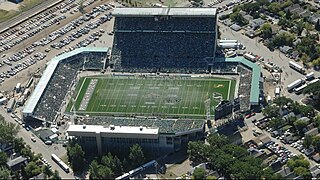
Taylor Field, known in its latter years as Mosaic Stadium at Taylor Field for sponsorship reasons, was an open-air stadium located in Regina, Saskatchewan. It was the home field of the Canadian Football League's Saskatchewan Roughriders from 1936 until 2016, although a playing field existed at the site as early as 1910 and the team began playing there as early as 1921. Originally designed primarily to house baseball the stadium was converted to a football-only facility in 1966.

Canadian National Exhibition Stadium was a multi-purpose stadium that formerly stood on the Exhibition Place grounds, in Toronto, Ontario, Canada. Originally built for Canadian National Exhibition events, the stadium served as the home of the Toronto Argonauts of the Canadian Football League, from 1959 to 1988, the Toronto Blue Jays of Major League Baseball from 1977 to 1989, and the Toronto Blizzard of the North American Soccer League from 1979 to 1983. The stadium hosted the Grey Cup game 12 times over a 24-year period.
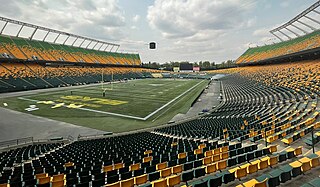
Commonwealth Stadium is an open-air, multipurpose stadium located in the McCauley neighbourhood of Edmonton, Alberta, Canada. It has a seating capacity of 56,302, making it the largest open-air stadium in Canada. Primarily used for Canadian football, it also hosts athletics, soccer, rugby union and concerts.

Percival Molson Memorial Stadium is an outdoor football stadium in Downtown Montreal, on the slopes of Mount Royal, in the borough of Ville-Marie. Named in honour of Percival Molson, and owned by McGill University, it was the home of the Montreal Alouettes of the Canadian Football League from 1954 to 1967 and again since 1998. The stadium is also home to the McGill Redbirds and Martlets of the RSEQ, the Montreal Royal of the American Ultimate Disc League, the Selwyn House Gryphons high-school football team and the Canadian Corporate Soccer League, the largest amateur corporate league in Canada.
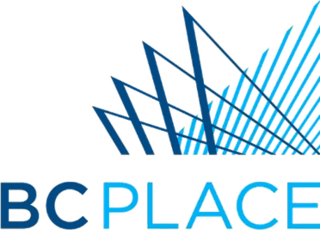
BC Place is a multi-purpose stadium in Vancouver, British Columbia, Canada. Located at the north side of False Creek, it is owned and operated by the BC Pavilion Corporation (PavCo), a crown corporation of the province.

Canad Inns Stadium was a multipurpose stadium in Winnipeg, Manitoba, Canada.

TD Place Stadium is an outdoor stadium in Ottawa, Ontario, Canada. It is located at Lansdowne Park, on the southern edge of The Glebe neighbourhood, where Bank Street crosses the Rideau Canal. It is the home of the Ottawa Redblacks of the Canadian Football League (CFL), Atlético Ottawa of the Canadian Premier League (CPL) and the Ottawa Gee-Gees football team of Ontario University Athletics (OUA), which represent the University of Ottawa.

Ivor Wynne Stadium was a Canadian football stadium located at the corner of Balsam and Beechwood avenues, two blocks west of Gage Avenue North in Hamilton, Ontario, Canada. The stadium was the home of the Hamilton Tiger-Cats of the CFL from 1950 until it closed on October 27, 2012. The club's previous home was the Hamilton Amateur Athletic Association Grounds. The stadium was replaced by Tim Hortons Field, with a fixed capacity of 24,000, on the same property.

McMahon Stadium is a Canadian football stadium in Calgary, Alberta. The stadium is owned by the University of Calgary and operated by the McMahon Stadium Society.

James Gamble Nippert Memorial Stadium is an outdoor stadium in Cincinnati, Ohio, on the campus of the University of Cincinnati. Primarily used for American football, it is the home field of the Cincinnati Bearcats football team. The stadium has also been used as a soccer venue, serving as the home of FC Cincinnati of Major League Soccer from their inaugural 2016 USL season through the 2020 MLS season, following which they moved to TQL Stadium. Nippert Stadium has a current seating capacity of 38,088 following the expansion and renovation performed in 2014, and the 2017 removal of corner seats to accommodate FC Cincinnati during their transition to the MLS. The stadium began in 1901 with a rudimentary for and field surface, with permanent concrete stands built along each sideline for the 1915 season and a complete horseshoe stadium completed in 1924, making it the fourth-oldest playing site and fifth-oldest stadium in college football, respectively.

Varsity Stadium is an outdoor collegiate football stadium located in Toronto, Ontario, Canada. It is home to the Toronto Varsity Blues, the athletic teams of the University of Toronto. Athletic events have been hosted on the site since 1898; the current stadium was built in 2007 to replace the original permanent stadium built in 1911. Varsity Stadium is also a former home of the Toronto Argonauts, and has previously hosted the Grey Cup, the Vanier Cup, several matches of the 1976 Summer Olympics soccer tournament, and the final game of the North American Soccer League's 1984 Soccer Bowl series. It is located next to Varsity Arena.

The Edmonton Gardens was the first indoor hockey arena built in Edmonton, Alberta, Canada. It was originally built as Edmonton Stock Pavilion in 1913, and held 5,200 spectators after its 1966 renovations.
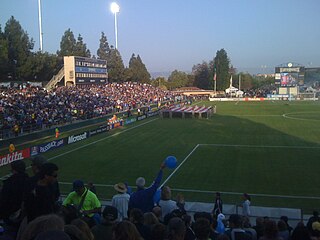
Stevens Stadium is a 7,000-seat soccer stadium on the west coast of the United States, located on the campus of Santa Clara University in Santa Clara, California. The stadium is the current home of the Santa Clara Broncos soccer teams and was the former home of the now-defunct football team as well as the baseball team. The baseball team moved to their new home at Stephen Schott Stadium in 2005.

Birchmount Stadium is a multi-purpose outdoor sports facility in Toronto, Ontario, Canada. It is located near Kingston Road and Birchmount Road in the former city of Scarborough. Its original capacity was 6,345, and it was built for what was then the Borough of Scarborough.

Thunderbird Stadium is an outdoor stadium on the University Endowment Lands in British Columbia, Canada. It is located west of Vancouver's city limits, and is primarily used for soccer and football by the UBC Thunderbirds. It seats 3,500 in the main grandstand, plus grass seating for about 5,000 people on the west side and ends of the stadium, and by using the surrounding grass embankment the facility can accommodate up to 12,000 spectators.

A multi-purpose stadium is a type of stadium designed to be easily used for multiple types of events. While any stadium could potentially host more than one type of sport or event, this concept usually refers to a specific design philosophy that stresses multifunctionality over specificity. It is used most commonly in Canada and the United States, where the two most popular outdoor team sports—Canadian football or American football and baseball—require radically different facilities. Football uses a rectangular field, while baseball is played on a diamond with a large outfield. Since Canadian football fields are larger than American ones, the design specifications for Canadian facilities are somewhat less demanding. The particular design to accommodate both is usually an oval, although some later designs use an octorad. While building stadiums in this way means that sports teams and governments can share costs, it also imposes some challenges.

Foote Field is a multi-purpose sports facility on the University of Alberta campus in Edmonton, Alberta, Canada, built as a legacy facility for the 2001 World Championships in Athletics. It was named for University of Alberta alumnus, former varsity track athlete, and philanthropist Eldon Foote, who donated $2 million toward the construction costs.
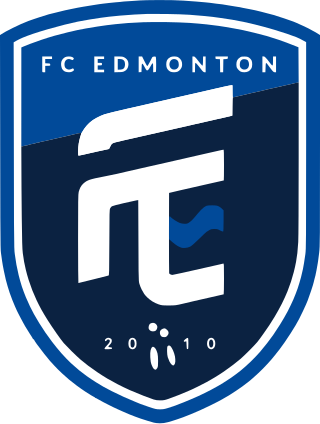
FC Edmonton was a Canadian professional soccer club based in Edmonton, Alberta. The club was founded in 2010 and competed in the North American Soccer League (NASL) from 2011 to 2017. They then returned in 2019 to compete in the Canadian Premier League from the league's inaugural season in 2019 until 2022. From 2012 onward, FC Edmonton's home field had been Clarke Stadium.

The Edmonton Soccer Dome is an air-supported structure located in Edmonton, Canada.





















